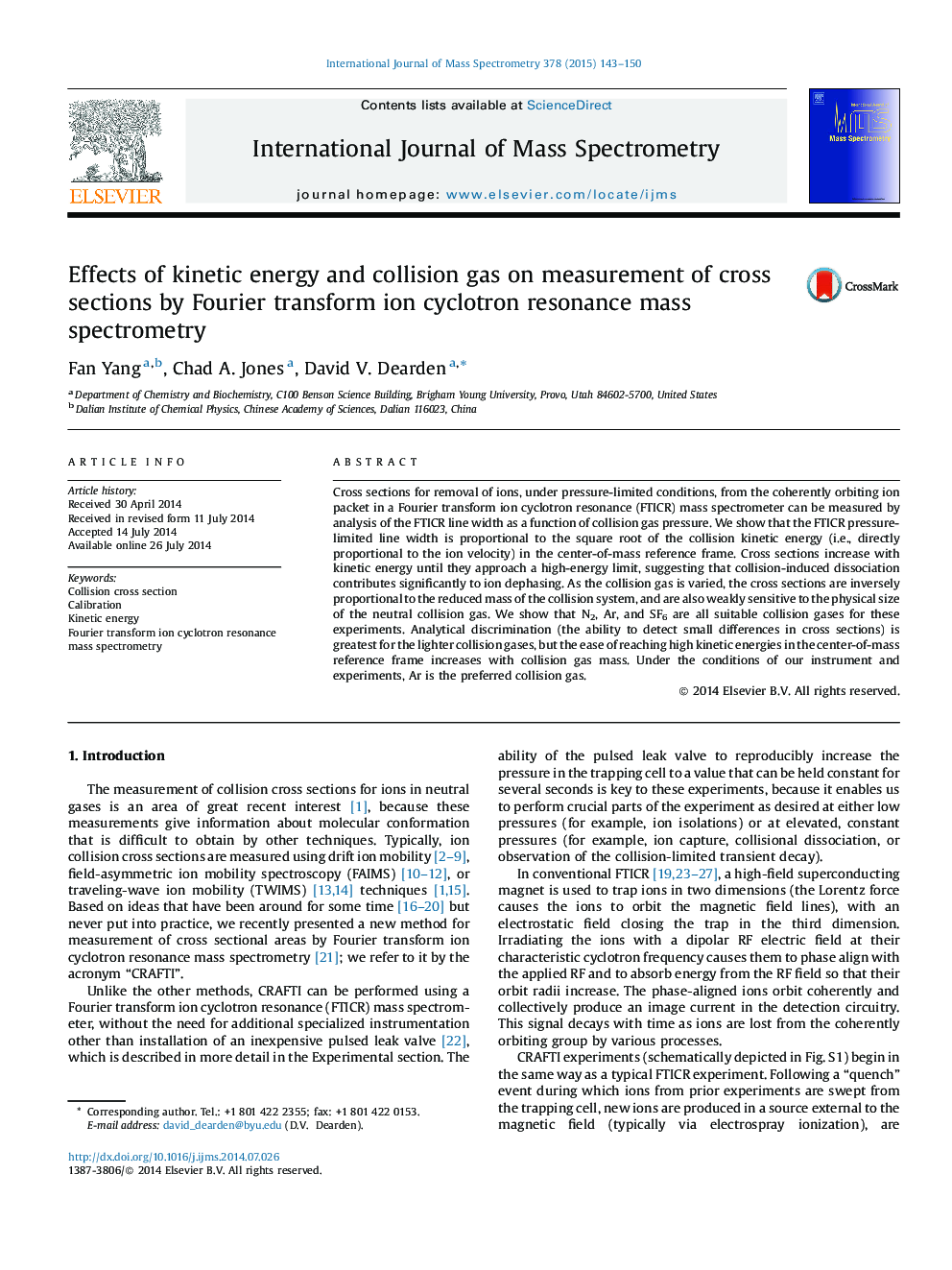| کد مقاله | کد نشریه | سال انتشار | مقاله انگلیسی | نسخه تمام متن |
|---|---|---|---|---|
| 1192090 | 1492250 | 2015 | 8 صفحه PDF | دانلود رایگان |
• Cross sections for ion dephasing can be determined from FTICR line widths.
• Cross sections increase with kinetic energy due to collisional dissociation.
• N2, Ar, and SF6 are all suitable neutral collision gases.
• Dephasing cross sections correlate well with cross sections from ion mobility.
• Ar is the preferred collision gas for dephasing cross section measurements.
Cross sections for removal of ions, under pressure-limited conditions, from the coherently orbiting ion packet in a Fourier transform ion cyclotron resonance (FTICR) mass spectrometer can be measured by analysis of the FTICR line width as a function of collision gas pressure. We show that the FTICR pressure-limited line width is proportional to the square root of the collision kinetic energy (i.e., directly proportional to the ion velocity) in the center-of-mass reference frame. Cross sections increase with kinetic energy until they approach a high-energy limit, suggesting that collision-induced dissociation contributes significantly to ion dephasing. As the collision gas is varied, the cross sections are inversely proportional to the reduced mass of the collision system, and are also weakly sensitive to the physical size of the neutral collision gas. We show that N2, Ar, and SF6 are all suitable collision gases for these experiments. Analytical discrimination (the ability to detect small differences in cross sections) is greatest for the lighter collision gases, but the ease of reaching high kinetic energies in the center-of-mass reference frame increases with collision gas mass. Under the conditions of our instrument and experiments, Ar is the preferred collision gas.
Figure optionsDownload high-quality image (146 K)Download as PowerPoint slide
Journal: International Journal of Mass Spectrometry - Volume 378, 15 February 2015, Pages 143–150
